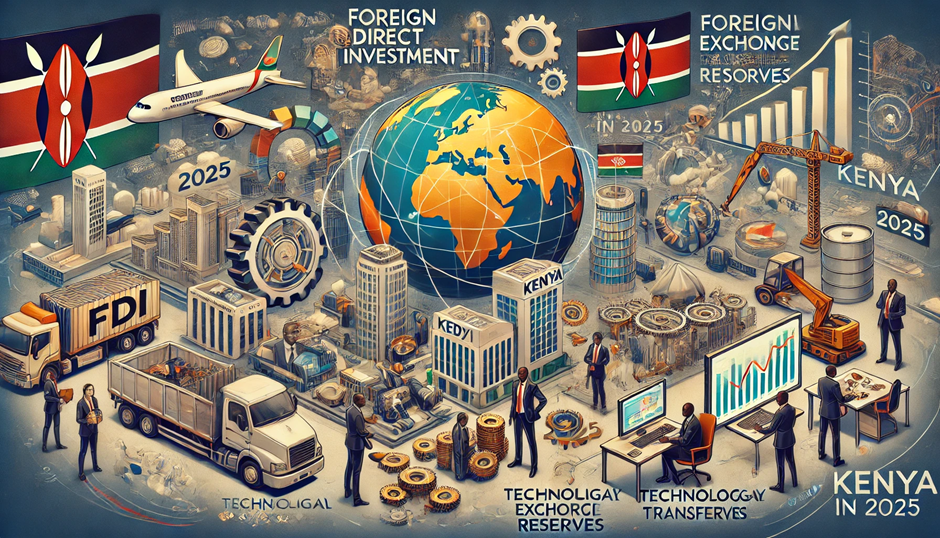
KUCCPS 2025: Course Selection Tips and Common Mistakes to Avoid

Source: Guides
Selecting the right course through the Kenya Universities and Colleges Central Placement Service (KUCCPS) is a pivotal decision for students embarking on their higher education journey. With the release of KCSE results in 2025, thousands of students will be competing for placements in a wide variety of courses at Kenya’s top universities and colleges. Whether you’re drawn to medicine, engineering, or data science, making an informed decision is crucial to ensuring you set off on the right academic path.
Understanding the KUCCPS Placement Process

The KUCCPS placement process plays a central role in determining which university and course you will be placed in, based on your KCSE performance and personal preferences. The system aims to match students with courses that align with their academic strengths and future aspirations.
Step 1: Analyse Your KCSE Results
Before diving into course selection, it’s essential to have a clear understanding of your KCSE results. These results will directly influence the courses available to you. For instance, students with higher mean grades often have access to more competitive courses like medicine, law, and engineering, while those with lower grades may need to focus on programs that have fewer applicants but still offer strong career prospects.
According to the Kenya National Examination Council (KNEC), in 2024, 73.1% of students passed the KCSE exams, with the majority of high-scoring students vying for high-demand fields.
Step 2: Explore Course Options
KUCCPS offers an extensive list of programs across universities and colleges in Kenya. In 2025, there will be an emphasis on emerging fields like data science, artificial intelligence (AI), and sustainable energy, alongside traditional courses like law, nursing, and education. In 2023, ICT had an annual growth rate of 12.5% in Kenya, which makes it one of the most promising sectors for the future. Understanding which sectors are expanding will help you align your course choices with industry trends.
Step 3: Narrow Your Choices
Given the broad range of available courses, it’s essential to focus on programs that match both your academic strengths and career goals. If you performed well in subjects like mathematics and physics, you might be well-suited for engineering or computer science. On the other hand, if you have a passion for healthcare and excelled in biology, consider fields like pharmacy, medicine, or nursing.
Step 4: Submit Your Application
Once you’ve narrowed your options, it’s time to apply through the KUCCPS portal. Make sure to submit your application within the prescribed deadlines (typically June 2025). Take extra care to double-check all your entries and preferences to avoid errors that could affect your placement.
Step 5: Await Your Placement Results
KUCCPS will announce placement results later in the year. Depending on the number of applicants and available slots, you might be placed in one of your top preferences or allocated a different program. Be patient during this process and stay informed about any updates on the KUCCPS website.
Course Selection Tips for 2025
1. Align Your Strengths with Your Course Choice

Source: Shiksha Mentor
Your academic performance is a strong indicator of which courses you should pursue. Students excelling in mathematics and sciences often find success in engineering, computer science, or medicine. Conversely, students with strengths in languages and social studies may consider law, education, or psychology. Consider your KCSE results as a tool for assessing which areas will offer you the best opportunity to excel academically and professionally.
2. Research Market Trends and Career Prospects

Source: Linkedln
While passion is important, aligning your course choice with market trends is just as critical. The ICT sector in Kenya, for example, continues to expand, with data science and AI emerging as some of the most lucrative career fields. According to the Kenya National Bureau of Statistics (KNBS), the demand for tech professionals has been growing at an annual rate of 12.5% since 2023. Similarly, there is a growing need for professionals in the healthcare and renewable energy sectors.
3. Seek Guidance from Experts and Mentors

Source: Forbes
It’s wise to seek advice from mentors, such as career counsellors, industry professionals, and teachers. These individuals can provide insights based on current industry needs and trends. Don’t hesitate to ask for guidance on the most relevant fields based on your personal interests and job market demands.
4. Consider Emerging Career Fields
In today’s fast-evolving job market, staying ahead of the curve is essential. Fields like AI, machine learning, cybersecurity, and green energy are experiencing rapid growth. In 2025, AI professionals are projected to see a 15% annual growth in demand globally, making it one of the most promising career paths. Students who choose courses in emerging fields will be better positioned to meet future job market needs.
Common Mistakes to Avoid When Choosing a Course

Source: Medium
1. Waiting Until the Last Minute
Rushing your course selection can lead to poor decisions. It’s important to start your research and application process early. This allows time to carefully evaluate different courses, understand the prerequisites, and identify your best options.
2. Choosing a Course Based Solely on Popularity
While certain courses like medicine or law may be widely recognized, they may not be the best fit for everyone. Opting for a popular course without considering your skills and interests could lead to dissatisfaction. Choose a course that aligns with your passion and long-term career goals.
3. Overlooking Course Content
It’s important to review the syllabus of the courses you’re considering. Each program can have slight differences in focus, and understanding the curriculum will help you make an informed choice. Don’t make the mistake of assuming that all programs with the same name are identical.
4. Ignoring Technological and Industry Changes
The world is changing rapidly, and new industries are emerging at a fast pace. The data science and cybersecurity sectors, for example, have exploded in recent years and will continue to grow. Don’t ignore these emerging fields just because they are new or unfamiliar. These industries are creating job opportunities that didn’t exist a decade ago.
Conclusion
The KUCCPS placement process is an exciting opportunity that opens doors to various educational and career paths. By understanding the process, aligning your strengths with your course choice, and avoiding common mistakes, you can make an informed decision that will set the foundation for a successful career. Take the time to research your options, seek advice, and avoid rushing into a decision. With careful planning, the right course selection will lead to endless opportunities in the future.
Good luck in your KUCCPS 2025 journey!
References
- KUCCPS Official Website
- Kenya National Bureau of Statistics – ICT Growth
- Career Point Kenya – Course Selection Tips
- TVET Kenya – Technical Education Programs








